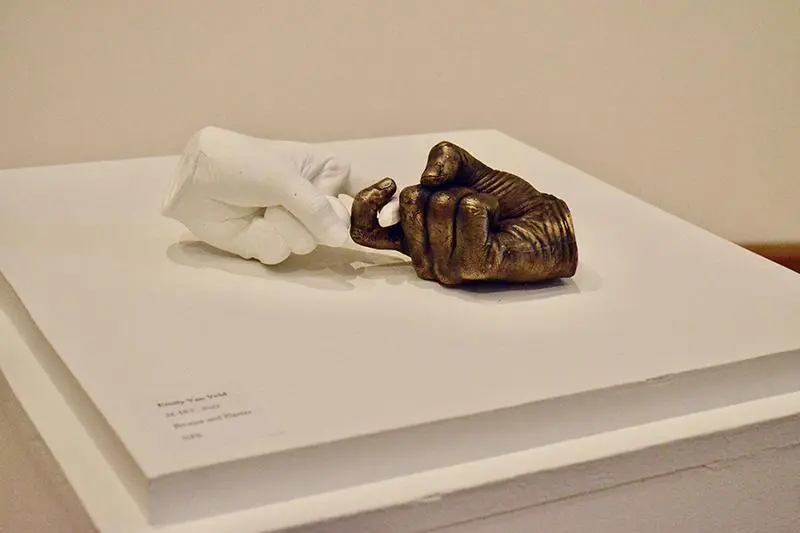Photo courtesy of Emily Van Veld '23
Art Therapy is the creation of art, connected to the cognitive process. Art therapists use methods of practicing art to provide therapeutic support for individuals and groups experiencing stress, anxiety, trauma, addictions, and grief.
Taylor’s pre-professional Pre-Art Therapy program began in 2021, equipping students with a combination of studio art and psychology courses. Students can complete the prerequisite coursework needed for graduate level studies, based on the standards of the American Art Therapy Association.
“Art therapy is more than just doing arts and crafts, although that can definitely a relaxing experience,” said Professor Hannah Richardson, who teaches classes in Art Education and Pre-Art Therapy. “When you create art in the context of a therapeutic relationship, you’re engaging in purposeful self-exploration and meaning-making.
“My curiosity always is the power of art to actually make an impact, which is what I see art therapy doing.”
Art Therapy is the creation of art, connected to the cognitive process. Art therapists use methods of practicing art to provide therapeutic support for individuals and groups experiencing stress, anxiety, trauma, addictions, and grief.
Pre-Art Therapy Expands with Concentrations
The Introduction to Pre-Art Therapy course, taken during January term (J-term), introduces students to the field of art therapy. After completing the course, Pre-Art Therapy majors can select either a studio or a counseling concentration. This specialization allows students to be more competitive for graduate programs.
At Taylor, students take one (tuition-free) class during the month of J-term. The expanded daily classroom experience over a short period of time allows students to get an in-depth look at what they are studying. This past January, Richardson taught the first Introduction to Pre-Art Therapy class.
Each class was broken up into two parts: a lecture on an art therapy concept and an experiential where the student creates art while thinking about the concept discussed. This class structure was inspired by the real-life process of art therapy.
Outside of class, Richardson wanted the students to interact with the course and connect the material to their own artwork. For homework, every day students turned in created pieces of art along with written reflections on their work process.
Over the course of the month, students had the opportunity to connect with 10 different therapists. They went on field visits to a mental health clinic in Indianapolis, and an art museum housing art therapy services in Bloomington, allowing them to see the different opportunities available for an art therapist.
"Each of the art therapists had their own kind of lens and perspective of what art therapy is," Richardson said. "But there were consistent lines that went the whole way through what they shared."
Students Explore Pre-Art Therapy
The class was open to all students, which provided a unique experience to all students involved as many new perspectives were shared. Sammy Sommers, a senior Exercise Science major and Psychology minor, hoped to learn more about the physiological aspects of art through therapy. After taking the class, he was impressed by the tools the art therapy world offers along with the new perspective he gained.
"I've always liked to paint, but I never knew why," said Sommers. "Art therapy revealed to me that painting is more fluid, a way to easily express emotions, which I never really understood. It now makes sense why I really liked to paint."
As a sophomore Pre-Art Therapy major, Serena Lee felt that through the experience in the class, she began to uncover just how unique art therapy is and fell in love with her new major.
“At first I was a little nervous and skeptical that it would be the right path for me,” Lee said. “But once our class went on a few field trips and talked with actual therapists in the field, I became confident that I wanted to do art therapy.”
Pre-Art Therapy at Taylor University
To become a licensed art therapist, graduate school is the next step after college. By choosing a concentration of either studio or counseling, students are able to specialize in their interest area, and be better equipped for graduate school and beyond. Taylor’s most recent graduates are in graduate school earning their master’s in art therapy focusing on Studio Art Therapy or Art Psychotherapy.
The principles explored in the Intro to Pre-Art Therapy class can be applied in other careers, including ministry, counseling, education, and others. Register for a campus visit today to talk with faculty about how Taylor might be a good fit for you.

